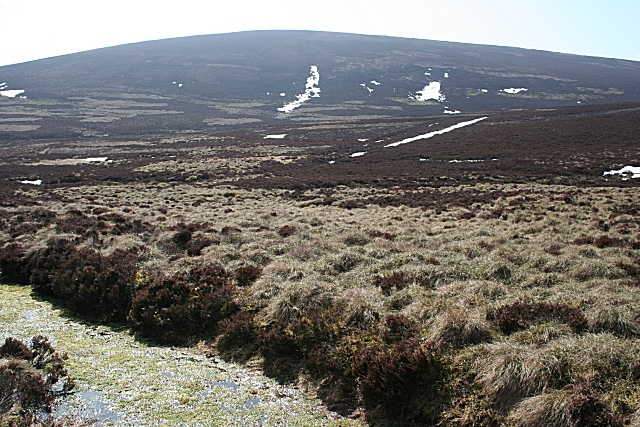Badenshore Moss
Downs, Moorland in Aberdeenshire
Scotland
Badenshore Moss

Badenshore Moss is a picturesque area located in Aberdeenshire, Scotland. Nestled amongst the rolling hills of the Downs region, it is a stunning example of moorland landscape. Spanning over a vast area, Badenshore Moss is known for its unique and diverse ecosystem.
The moss is predominantly composed of peat, which provides a rich habitat for a variety of flora and fauna. The area is covered with heather, cotton grass, and various moss species, creating a vibrant and colorful scenery. The moss is also home to a number of rare and endangered plant species, making it an important site for conservation.
The wildlife in Badenshore Moss is equally impressive. The moorland provides a habitat for several bird species, including the iconic red grouse, curlew, and lapwing. These birds can often be spotted soaring through the skies or nesting on the ground. The moss is also inhabited by various mammals, such as red deer and mountain hares, which roam freely through the open landscape.
The moss is a popular destination for nature enthusiasts and hikers, who can explore the area through well-maintained walking trails. The breathtaking views of the surrounding hills and valleys make it a favorite spot for photographers and painters alike.
Badenshore Moss is not only a beautiful natural landscape but also an important site for preserving biodiversity and supporting local wildlife. It offers a tranquil escape from the bustling city life, allowing visitors to immerse themselves in the peacefulness and serenity of nature.
If you have any feedback on the listing, please let us know in the comments section below.
Badenshore Moss Images
Images are sourced within 2km of 57.263943/-2.987405 or Grid Reference NJ4019. Thanks to Geograph Open Source API. All images are credited.




Badenshore Moss is located at Grid Ref: NJ4019 (Lat: 57.263943, Lng: -2.987405)
Unitary Authority: Aberdeenshire
Police Authority: North East
What 3 Words
///denoting.sizing.munched. Near Alford, Aberdeenshire
Nearby Locations
Related Wikis
Grampian
Grampian (Scottish Gaelic: Roinn a' Mhonaidh) was one of nine former local government regions of Scotland created in 1975 by the Local Government (Scotland...
Glenbuchat Castle
Glenbuchat Castle is a historic Z plan Scottish castle built in 1590 for John Gordon of Cairnbarrow to mark his wedding. It is located above the River...
Peatfold Burn
Peatfold Burn is a burn which marks the boundary of the parish of Huntly, Aberdeenshire, Scotland. == References ==
Clova Monastery
Clova Monastery (also called Cloveth) was a medieval Culdee monastery in Kildrummy, Aberdeenshire, Scotland. == Founding == Clova was founded in the late...
Have you been to Badenshore Moss?
Leave your review of Badenshore Moss below (or comments, questions and feedback).














